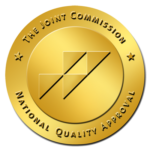Hypervigilance is a state of constant alertness and heightened sensitivity to one’s surroundings. It’s a common symptom of anxiety and post-traumatic stress disorder (PTSD), among other mental health ailments.
If you’re experiencing hypervigilance, you know how exhausting it can be. Many cases negatively impact a person’s ability to function in daily life. Fortunately, there are ways to overcome hypervigilance. Here’s what hypervigilance looks like, including several hypervigilance examples, and how to treat the condition. There’s help both through professionals and self-care.
Hypervigilance Examples
Hypervigilance can manifest in many ways, depending on the person and situation. Here are some hypervigilance examples:
- Constantly scanning one’s surroundings for potential danger
- Being easily startled or jumpy
- Difficulty sleeping or staying asleep due to heightened alertness
- Feeling anxious or tense in crowded or noisy environments
- Worrying when in unfamiliar or new situations
- Avoiding social situations due to fear of being overwhelmed
These things don’t happen just once to people who experience hypervigilance, but they’re a regular state.
Treatments for Hypervigilance
Treatment for the symptoms and underlying causes is both available and effective. There are several treatments for hypervigilance, however, cutting-edge mental health centers such as Deer Hollow approach hyper vigilance with therapy focused on identifying and understanding the triggers for a clients’ hypervigilance. When clients understand triggers of their hyper vigilance, they are then able to intervene and prevent trauma responses.
Self-Help Strategies for Hypervigilance
In addition to therapy and occasionally medication, there are several self-help strategies that can help. These might be sufficient on their own, and they at least help other treatment methods when done in conjunction with the other treatments. You might try:
- Mindfulness meditation: Mindfulness meditation can help individuals learn to focus on the present moment and reduce stress and anxiety.
- Exercise: Regular exercise can help reduce symptoms of anxiety and improve sleep. • Deep breathing: Deep breathing exercises can help individuals relax and reduce feelings of tension and anxiety.
- Establish a routine: Establishing a daily routine can help individuals feel more in control and reduce feelings of anxiety and hypervigilance.
Deer Hollow Recovery & Wellness Centers
At Deer Hollow Recovery, we offer evidence-based treatments for hypervigilance and other mental health conditions. Our experienced staff provides specialized care and individualized treatment plans to help individuals overcome hypervigilance and achieve lasting recovery. At Deer Hollow, we approach recovery differently. We have a unique method to approaching mental
health, treating the root of your trauma which therefore adjusts how it presents itself in day-to day life.
If you or someone you know is struggling with hypervigilance or other mental health conditions, contact us at Deer Hollow today. Tomorrow could be your first day toward recovery.
